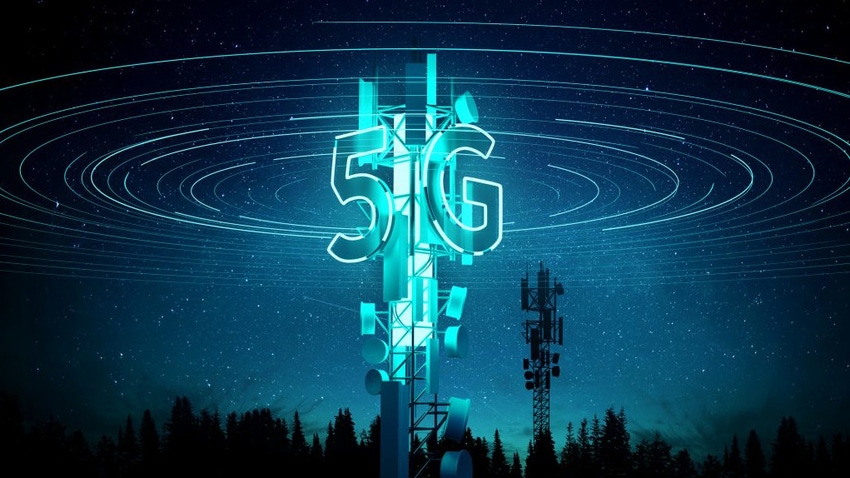Qualcomm
Qualcomm CEO: expect “pre-commercial” 6G devices by 2028
During his keynote speech at the 2025 Snapdragon Summit in Maui, Qualcomm CEO Cristiano Amon said:
“We have been very busy working on the next generation of connectivity…which is 6G. Designed to be the connection between the cloud and Edge devices, The difference between 5G and 6G, besides increasing the speeds, increasing broadband, increasing the amount of data, it’s also a network that has intelligence to have perception and sensor data. We’re going to have completely new use cases for this network of intelligence — connecting the edge and the cloud.”
“We have been working on this (6G) for a while, and it’s sooner than you think. We are ready to have pre-commercial devices with 6G as early as 2028. And when we get that, we’re going to have context aware intelligence at scale.”
…………………………………………………………………………………………………………………………………………………………………………………………..
Analysis: Let’s examine that statement, in light of the ITU-R IMT 2030 recommendations not scheduled to be completed until the end of 2030:
“pre-commercial devices” are not meant for general consumers while “as early as” leaves open the possibility that those 6G devices might not be available until after 2028.
…………………………………………………………………………………………………………………………………………………………………………………………..
Looking ahead at the future of devices, Amon noted that 6G would play a key role in the evolution of AI technology, with AI models becoming hybrid. This includes a combination of cloud and edge devices (like user interfaces, sensors, etc). According to Qualcomm, 6G will make this happen. Anon envisions a future where AI agents are a crucial part of our daily lives, upending the way we currently use our connected devices. He firmly believes that smartphones, laptops, cars, smart glasses, earbuds, and more will have a direct line of communication with these AI agents — facilitated by 6G connectivity.
Opinion: This sounds very much like the hype around 5G ushering a whole new set of ultra-low latency applications which never happened (because the 3GPP specs for URLLC were not completed in June 2020 when Release 16 was frozen). Also, very few mobile operators deployed 5G SA core, without which there are no 5G features, like network slicing and security.
Separately, Nokia Bell Labs has said that in the coming 6G era, “new man-machine interfaces” controlled by voice and gesture input will gradually replace more traditional inputs, like typing on touchscreens. That’s easy to read as conjecture, but we’ll have to see if that really happens when the first commercial 5G networks are deployed in late 2030- early 2031.
We’re sure to see faster network speeds with higher amounts of data with 6G with AI in more devices, but standardized 6G is still at least five years from being a commercial reality.
References:
https://www.androidauthority.com/qualcomm-6g-2028-3600781/
https://www.nokia.com/6g/6g-explained/
ITU-R WP5D IMT 2030 Submission & Evaluation Guidelines vs 6G specs in 3GPP Release 20 & 21
ITU-R WP 5D reports on: IMT-2030 (“6G”) Minimum Technology Performance Requirements; Evaluation Criteria & Methodology
ITU-R: IMT-2030 (6G) Backgrounder and Envisioned Capabilities
Ericsson and e& (UAE) sign MoU for 6G collaboration vs ITU-R IMT-2030 framework
Highlights of 3GPP Stage 1 Workshop on IMT 2030 (6G) Use Cases
6th Digital China Summit: China to expand its 5G network; 6G R&D via the IMT-2030 (6G) Promotion Group
MediaTek overtakes Qualcomm in 5G smartphone chip market
ITU-R WP5D IMT 2030 Submission & Evaluation Guidelines vs 6G specs in 3GPP Release 20 & 21
Like previous generations of international mobile telecommunications (IMT) recommendations, ITU-R defines the 6G terrestrial radio access network requirements while 3GPP develops the standardized technology specifications that will be the project’s candidate to the ITU-R process. The target date for “Technology proposals for IMT-2030 RIT/SRITs” has been defined by ITU-R to be early 2029, and resulting specifications (i.e. full system definition) are to be submitted by mid-2030 at the latest. 3GPP contributions to ITU-R WP 5D are made via ATIS – its North American partner standards organization. That is effectively how IMT 2020 RIT/SRIT became standardized in ITU-R M.2150 (5G RIT/SRITs).
At it’s July 2025 meeting in Japan, ITU-R WP 5D generated an outline of a working document that, when completed, will specify the requirements, evaluation criteria and submission templates for the development of IMT-2030 recommendation(s) sometime in 2030. The structure of this working document is based on Report ITU-R M.2411, and the sections and contents of each section are to be further discussed. This meeting also discussed 16 contributions on evaluation guidelines for IMT-2030 and that working document was updated
Meanwhile, 3GPP has concluded that two 3GPP Releases are needed to specify 6G: Release 20 for Studies and Release 21 for the normative work that will produce 6G specs. Technical studies on the 6G radio interface and 6G core network architecture within the RAN and SA Working Group to start in June 2025. Release 21 will be the official start of normative 6G work.

Juan Montojo, Qualcomm’s vice president of technical standards, told Light Reading that all of today’s 3GPP 6G contributors are committed. “I can say I’m very confident that every player that comes to the 3GPP is a full believer in the value of having a single, global standard,” he told Light Reading. “I’ve not seen any exception, or any [other] indication.” 3GPP Release 20 lays an important foundation for 6G, said Montojo in a blog post.
Huawei had way more delegates attending 3GPP 5G sessions than any other company which raised concerns that the company might exert undue influence on the development of 3GPP 5G specs to its advantage. However, it has now become much harder for companies from a particular region to dominate proceedings, according to Montojo. “There are very recent decisions where working group officials cannot all come from the same region,” he explained. The system has also been changed so that companies with operations in multiple geographies, such as Huawei and Qualcomm, cannot claim to be from any region except that of their headquarters, Montojo said.
Future 6G Patents:
While the standardization process remains open to new entrants, the likelihood is that 6G’s ultimate patent owners will be drawn heavily from the ranks of today’s 5G network equipment vendors, chipmakers and smartphone companies that actively participate at 3GPP and ITU-R meetings. Several independent assessments forecast that Qualcomm and Huawei will likely remain at or near the top for the forthcoming 6G related patents,. In January, a LexisNexis study ranked Huawei first in 5G based on patent ownership and standards contributions. A separate LexisNexis ranking called the Patent Asset Index, which attempted to score organizations based on the value of their patents, gave the top spot to Qualcomm. In 2024, patent licensing accounted for only 14% of Qualcomm’s revenues but ~39% of its pre-tax earnings.
- Huawei (China): Huawei holds a significant share of 5G patents and is actively developing 6G technology, according to Williams IP Law. They are also a strong contributor to 5G technical standards.
- Qualcomm (US): Qualcomm is evolving its research from 4G and 5G towards 6G, holding a notable percentage of global 5G patents. They are also a major player in software-defined network solutions for 6G.
- Samsung (South Korea): Samsung is a prominent player in 5G patent ownership and is leading efforts in 6G standardization, including chairing the ITU-R 6G Vision Group. They are also investing heavily in terahertz communication technologies for 6G.
- Ericsson (Sweden): Ericsson is recognized for its strong 5G patent portfolio and contributions to technical standards. They are actively engaged in 6G research and development, including collaborations and investments in areas like network compute fabric and trustworthy systems.
- Nokia (Finland): Nokia is another key player in 5G patent ownership and a significant contributor to 5G technical standards. They identified key technologies for 6G early on and are actively testing and setting 6G standards through collaborations and research labs.
Higher Spectrum Bands for 6G:
Much of the industry’s recent attention has been captured by the upper 6GHz band and the 7GHz to 15GHz range. Unfortunately, signals do not travel as far or penetrate walls and other obstacles as effectively in these higher bands. To compensate, 6G’s active antenna systems are set to include four times as many elements as today’s most advanced 5G technologies, according to Montojo.
“It is part of the requirement in 3GPP to reduce the site grid of the existing C-band,” he said. “You would not want to require a densification beyond the levels that we currently have but can actually guarantee reuse of the site grid of the C-band into these higher bands.” Some analysts, however, remain dubious. A so-called massive MIMO (multiple input, multiple output) radio loaded with an even bigger number of antennas is likely to be expensive, meaning the deployment of 6G for mass-market mobile services in higher spectrum bands might not be economically viable.
6G Core Network (3GPP only- no ITU involvement):
“The best-case scenario, and I would say default scenario, is that 6G radio will be connected to 6G core as basically the standards-based approach,” said Montojo. “What 6G core will be is TBD, but there is a lot of desire from the operator community to have a 6G core that is an evolved 5G core with some level, to be defined, of backwards compatibility.”
Here’s an AI generated speculation on the 6G core network to be specified by 3GPP in Release 21:
- AI and Machine Learning (ML) will be fundamental to the 6G core, moving beyond supplementary roles to become an inherent part of the network’s design and operation.
- Every network function may be AI-powered, enabling advanced decision-making, predictive maintenance, and real-time optimization.
- 6G core will be designed to support the full lifecycle of AI components, including data collection, model training, validation, deployment, and performance monitoring.
- Network slicing will evolve further in 6G, enabling even more flexible, customized, and isolated network slices tailored to the diverse requirements of emerging applications.
- The 6G core will likely leverage a streamlined, unified, and future-proof exposure framework, potentially building on the 3GPP Common API Framework (CAPIF), to enable new value creation and monetization opportunities through network service exposure to third parties.
- The 6G core will be designed with a strong focus on energy efficiency and sustainability, considering the growing demands and environmental impact of network operations.
- It will need to be resilient to handle high mobility conditions of devices across various networks and administrative domains, including terrestrial and non-terrestrial networks (NTNs) like satellites & drones.
- Security and trustworthiness will be paramount, requiring a strong emphasis on authentication, data privacy, integrity, and operational resilience.
- The 6G core will likely incorporate quantum-safe cryptography to address the threat of quantum computing.
- While many in the industry favor an evolutionary path building upon the 5G core, some in the Chinese telecom ecosystem have advocated for a completely new 6G core network architecture.
- This suggests a potential for divergence in the early stages of 6G development, with discussions and debates within 3GPP shaping the ultimate architectural choices.
In summary, the 6G core network to be specified by 3GPP is anticipated to be a highly intelligent, flexible, and efficient platform, deeply integrated with AI/ML, supporting diverse services through enhanced network slicing and exposure, while addressing critical challenges in security, sustainability, and global connectivity.
…………………………………………………………………………………………………………………………………………………………………………………………
References:
https://www.3gpp.org/specifications-technologies/releases/release-20
The SA1 road to 6G: https://www.3gpp.org/news-events/3gpp-news/sa1-6g-road
Introduction to 3GPP Release 19 and 6G Planning – Contains an introduction to the preparation for 6G in 3GPP: https://atis.org/webinars/introduction-to-3gpp-release-19-and-6g-planning/
Advancing 5G towards 6G, TSDSI Workshops (Jan 2023): https://www.3gpp.org/news-events/partner-news/tsdsi-workshops
https://www.lightreading.com/6g/qualcomm-is-optimistic-geopolitics-won-t-tear-6g-apart
ITU-R WP 5D reports on: IMT-2030 (“6G”) Minimum Technology Performance Requirements; Evaluation Criteria & Methodology
Highlights of 3GPP Stage 1 Workshop on IMT 2030 (6G) Use Cases
ITU-R: IMT-2030 (6G) Backgrounder and Envisioned Capabilities
ITU-R WP5D invites IMT-2030 RIT/SRIT contributions
NGMN issues ITU-R framework for IMT-2030 vs ITU-R WP5D Timeline for RIT/SRIT Standardization
IMT-2030 Technical Performance Requirements (TPR) from ITU-R WP5D
Draft new ITU-R recommendation (not yet approved): M.[IMT.FRAMEWORK FOR 2030 AND BEYOND]
IMT Vision – Framework and overall objectives of the future development of IMT for 2030 and beyond
Qualcomm to acquire Alphawave Semi for $2.4 billion; says its high-speed wired tech will accelerate AI data center expansion
Qualcomm Inc. has agreed to buy London-listed semiconductor company Alphawave IP Group Plc (“Alphawave Semi”) for about $2.4 billion in cash to expand its technology for artificial intelligence (AI) in data centers. The deal is expected to close in the first quarter of 2026, subject to regulatory and shareholder approval.
Alphawave Semi is claimed to be a global leader in high-speed wired connectivity and compute technologies delivering IP, custom silicon, connectivity products and chiplets. It’s products ‘form a part of the core infrastructure enabling next generation services in a wide array of high growth applications’ such as data centers, AI, data networking and data storage, according to the press release.
Regarding connectivity, Alphawave Semi develops industry leading PAM4 and Coherent DSP products in the most advanced technologies for all forms of data center connectivity.
Alphawave (which held an initial public offering in 2021 at 410 pence per share) has consistently traded below that level. The company had struggled with a reliance on large customers and navigating geopolitical tensions between the US and China, where Alphawave decided to cut back its business last year.
Still, the company’s technology has been gaining traction and had reported a surge in orders in the fourth quarter. Chief Executive Officer Tony Pialis said in a statement at the time that orders from North American AI customers were driving the business.
Qualcomm Chief Executive Officer Cristiano Amon is looking to reduce the company’s reliance on the smartphone market, where growth has slowed, and push into new areas. Alphawave makes high-speed semiconductor and connectivity technology that can be used for data centers and AI applications, two growth areas in the chip industry that are being driven by demand for products like OpenAI’s ChatGPT.
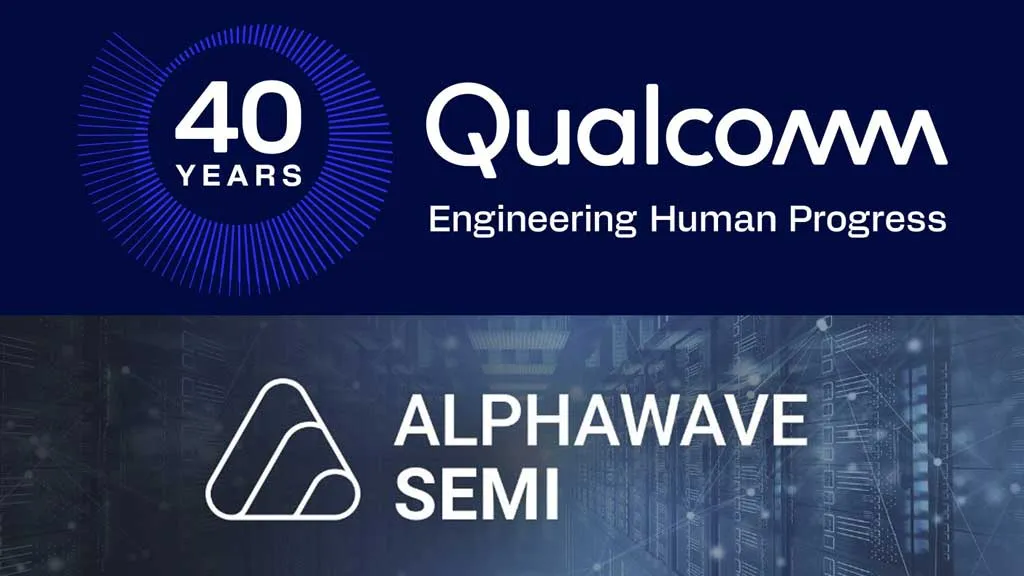
Image credit: Qualcomm / Alphawave Semi
“Qualcomm’s acquisition of Alphawave Semi represents a significant milestone for us and an opportunity for our business to join forces with a respected industry leader and drive value to our customers,” said Tony Pialis, president and CEO of Alphawave Semi. “By combining our resources and expertise, we will be well-positioned to expand our product offerings, reach a broader customer base, and enhance our technological capabilities. Together, we will unlock new opportunities for growth, drive innovation, and create a leading player in AI compute and connectivity solutions.”
“Under Tony’s leadership Alphawave Semi has developed leadi
ng high-speed wired connectivity and compute technologies that are complementary to our power-efficient CPU and NPU cores,” said Mr. Amon. “Qualcomm’s advanced custom processors are a natural fit for data center workloads. The combined teams share the goal of building advanced technology solutions and enabling next-level connected computing performance across a wide array of high growth areas, including data center infrastructure.”
References:
https://www.qualcomm.com/news/releases/2025/06/qualcomm-to-acquire-alphawave-semi
https://www.telecoms.com/enterprise-telecoms/qualcomm-to-purchase-alphawave-semi
MediaTek overtakes Qualcomm in 5G smartphone chip market
T‑Mobile achieves record 5G Uplink speed with 5G NR Dual Connectivity
T-Mobile US claims it broke a world record with its 5G standalone (SA) network via a new feature called New Radio Dual Connectivity (5G DC) [1.]. With 5G DC. The so called “Un-carrier” was able to massively increase uplink throughput and capacity, reaching peak speeds of 2.2 Gbps — that’s the fastest recorded anywhere in the world — and demonstrates the technology’s potential to create serious efficiencies in how data is transmitted from devices to the network.
Note 1. New Radio Dual Connectivity (NR-DC) is a dual connectivity configuration that uses the 5G standalone core (specified by 3GPP but not standardized by ITU-R or ITU-T). In this configuration, both the primary and secondary RAN nodes are 5G gNBs. NR-DC was was specified in 3GPP Release 15 along with simultaneous receive (Rx) / transmit (Tx) band combinations for NR CA/DC.
…………………………………………………………………………………………………………………………………..
To put T-Mo’s 2.2 Gbps uplink speed into context, the latest report from connectivity data specialist Ookla puts the median mobile upload speed in the U.S. at 8.41 Mbps, although that’s across networks. T-Mobile is ahead of major rivals AT&T and Verizon with a median upload speed of 12.19 Mbps.
In June Ookla stated that while U.S. network operators have invested heavily in improving 5G download speeds, “5G upload and latency performance need more attention.” Its data at the time showed Verizon and T-Mobile had comparable 5G upload at just above 15 Mbps, while AT&T lagged somewhat at closer to the 10 Mbps mark.
5G DC enables the Un-carrier to aggregate 2.5 GHz and mmWave spectrum, allowing for an insane boost to uplink throughput and capacity. In this test, T-Mobile was able to allocate 60% of the mmWave radio resources for uplink where previous use cases typically allowed up to 20%. Completed on T-Mobile’s 5G SA production network in SoFi Stadium in Southern California with equipment and 5G DC solution from Ericsson and a mobile test smartphone powered by a flagship Snapdragon® X80 5G Modem-RF System from Qualcomm Technologies, Inc., this test changes the game for providers looking to offer customers and businesses the best experience possible at crowded events.
“With 5G DC, T-Mobile is pushing the boundaries of what’s possible to create better experiences in the places that matter most to our customers,” said Ulf Ewaldsson, President of Technology at T-Mobile. “This accomplishment is a testament to the network we’ve built over the last five years and our ability to deliver unparalleled capabilities that extend beyond the devices in our pockets.”
For those in the know, download speeds typically reign as the top network performance metric, but with recent strides in uplink capabilities and increasingly demanding tasks, upload speed is becoming more important than ever, especially for live events, mobile gaming and extended reality applications.
Because of this, SoFi Stadium served as the perfect test site for 5G DC. Every year, millions of people flock to the stadium for the latest football game or to catch their favorite artists in concert. Naturally, all these people want to post, livestream and share their experiences in real-time, which can sometimes be a challenge at crowded events with limited capacity. Not to mention broadcast crews who need to upload high-definition content to production teams in real-time for those watching at home. With 5G DC and T-Mobile, all of this gets done faster than ever, alleviating posting FOMO and production crew headaches.
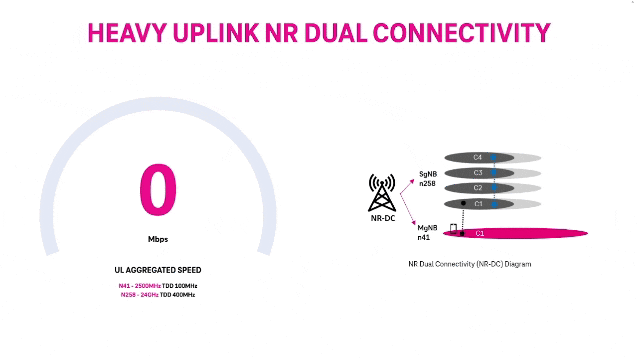
Mårten Lerner, Head of Product Area Networks at Ericsson, said: “High uplink speeds are essential for delivering immersive experiences and reliable 5G connectivity. This mirrors one of our key objectives with the recent launch of Ericsson 5G Advanced, which is to elevate user experience by enhancing network performance for more interactive applications. This 5G uplink speed milestone, achieved with T-Mobile and Qualcomm, underscores our commitment to taking user experience to unprecedented levels.”
“We are incredibly proud to achieve yet another world record with T-Mobile. This groundbreaking achievement shows what could be possible with 5G DC and how it can bring new, unparalleled experiences to consumers, especially at large events like football games and concerts,” said Sunil Patil, Vice President, Product Management, Qualcomm Technologies, Inc. “We will continue our close collaboration with global innovators like T-Mobile and Ericsson to push the boundaries and unlock the full potential of 5G.”
5G network covers more than 330 million people across two million square miles. More than 300 million people nationwide are covered by T-Mobile’s super-fast Ultra Capacity 5G with over 2x more square miles of coverage than similar mid-band 5G offerings from the Un-carrier’s closest competitors.
For more information on T-Mobile’s network, visit T-Mobile.com/coverage.
References:
https://www.t-mobile.com/news/network/t-mobile-shatters-for-5g-uplink-speed
https://www.telecoms.com/5g-6g/t-mobile-us-uses-5g-dc-to-claim-uplink-speed-record
Telstra achieves 340 Mbps uplink over 5G SA; Deploys dynamic network slicing from Ericsson
Finland’s Elisa, Ericsson and Qualcomm test uplink carrier aggregation on 5G SA network
Ericsson and MediaTek set new 5G uplink speed record using Uplink Carrier Aggregation
Samsung-Mediatek 5G uplink trial with 3 transmit antennas
Dish Wireless with Qualcomm Technologies and Samsung test simultaneous 5G 2x uplink and 4x downlink carrier aggregation
BT, Nokia and Qualcomm demonstrate 2CC CA on uplink of a 5G SA network
MediaTek overtakes Qualcomm in 5G smartphone chip market
According to new figures from Omdia’s Smartphone Model Market Tracker, shipments of 5G smartphones powered by Taiwan based MediaTek reached 53 million in the first three months of the year, representing an impressive 53% uptick on Q1 2023. Shipments of smartphones with Qualcomm’s Snapdragon inside were comparatively flat, inching up to 48.3 million from 47.2 million.
MediaTek’s market share in 5G smartphones rose to 29.2% in 1Q24, up from 22.8% in 1Q23, while Qualcomm Snapdragon’s share decreased from 31.2% to 26.5% over the same period.
As a result, MediaTek’s market share in the 5G smartphone chipset market increased to 29.2% from 22.8%, while Qualcomm’s fell to 26.5% from 31.2%. Apple is third, while a Samsung owned Exynos, Huawei-owned HiSilicon’s Kirin, Google Tensor and Shanghai-based Unisoc make up the rest (see chart below).
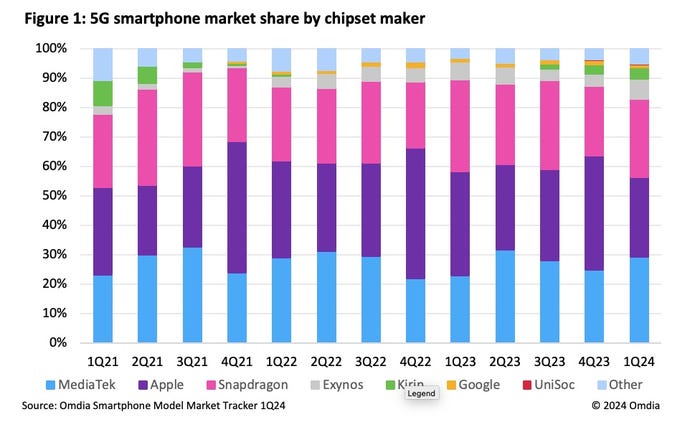
Notes:
- It’s not clear whether Omdia includes both processors and 5G modem chip sets in their statistics.
- Apple uses in-house processors for its iPhones, but it still relies on Qualcomm for the 5G modem chips.
- Both MediaTek and Qualcomm sell SoC’s which include both a 4G/5G modem and an ARM processor.
……………………………………………………………………………………………………………………………
According to Omdia, Q1 shipments of 5G smartphones below $250 surged by 62% year-on-year to 62.8 million. This favors MediaTek as the preferred choice for this segment. Furthermore, in June, Omdia also reported in booming demand for sub-$150 phones, with shipments in this category growing to 120 million in the first quarter, up from 90 million a year earlier.
“The smartphone chipset industry is primarily shaped by two major trends: the widespread adoption of 5G and the expanding low-end segment. As 5G technology becomes more affordable and is integrated into smartphones priced below $250, MediaTek stands to benefit the most,” explained Aaron West, senior analyst in Omdia’s smartphone group.
The premium end of the market, where prices start at $600, is also growing – albeit not as rapidly. According to Omdia, shipments increased to 73 million from 70 million, driven by the launch of Samsung’s Galaxy S24 series, and the iPhone 15 Pro Max.
The popularity of premium devices should help Qualcomm come roaring back – it has spent much of this year promoting the on-device AI capabilities of its latest Snapdragon chipset, features that will be incorporated first and foremost into pricier handsets.
“On-device AI capabilities are becoming increasingly important to smartphone OEMs, with Snapdragon emerging as a key innovator and preferred choice for premium devices,” West said.
……………………………………………………………………………………………………………………………
Other Voices:
- According to Markets and Markets, the global 5G chipsets market size is estimated to be USD 36.29 billion in 2023 and is projected to reach USD 81.03 billion by 2028 at a CAGR of 17.4%.
- Grandview Markets says the global 5G chipset market size was estimated at USD 39.32 billion in 2023 and is expected to grow at a CAGR of 20.7% from 2024 to 2030.
Illustrations:

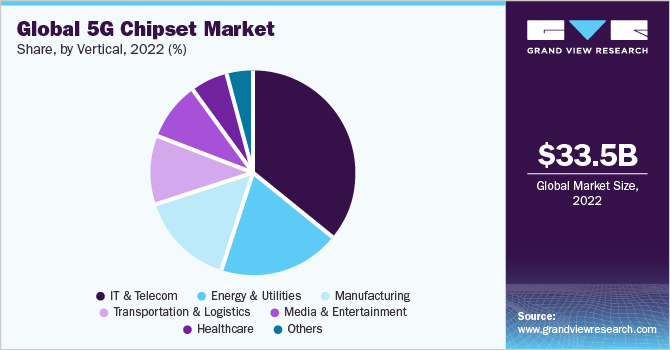
References:
https://www.lightreading.com/5g/mediatek-outgrowing-qualcomm-snapdragon-in-the-5g-smartphone-market-omdia
https://www.telecoms.com/mobile-devices/rise-of-cheaper-5g-phones-lifts-mediatek-above-qualcomm
https://www.marketsandmarkets.com/Market-Reports/5g-chipset-market-150390562.html
https://www.grandviewresearch.com/industry-analysis/5g-chipset-market
GSA: More 5G SA devices, but commercial 5G SA deployments lag
Global 5G Market Snapshot; Dell’Oro and GSA Updates on 5G SA networks and devices
Mediatek Dimensity 6000 series with lower power consumption for affordable 5G devices
Nokia, BT Group & Qualcomm achieve enhanced 5G SA downlink speeds using 5G Carrier Aggregation with 5 Component Carriers
BT claims to be the first European network operator to achieve 5G carrier aggregation with five component carriers (5G CC CA). Led by BT Networks team at Adastral Park, with support from BT Research, this is the latest milestone in 5G innovation for us, and promises to deliver potentially even faster 5G SA downlink speeds in the future, of up to nearly 2 Gbps. What this means for customers is a significant boost in performance in areas of high demand when the 5G SA device requires a high-speed connection, for example when watching live sport at a train station in rush hour.
The 5G CC CA trial used Nokia’s 5G AirScale portfolio and a device powered by a Snapdragon® 5G Modem-RF system from Qualcomm Technologies, Inc., a pioneer and global leader in 5G technology. Here are the highlights:
- BT Group becomes first European operator to achieve 5G 5CC carrier aggregation, boosting 5G standalone (SA) performance ahead of network launch later this year.
- Combines three FDD and two TDD carriers with 150 MHz total bandwidth, delivering greater capacity and downlink speeds in areas of high demand.
- Follows 5G SA downlink 4CC carrier aggregation breakthrough in 2022, and concurrent two carrier uplink aggregation in 2023.
5CC CA will significantly boost the data rates available to customers in areas of high demand by combining all mid-band radio spectrum when the 5G SA device requires a high-speed connection. Set to launch later this year, EE’s 5G SA network will also have the capability to leverage a low frequency sixth carrier to provide a superior experience in more places, including indoors.
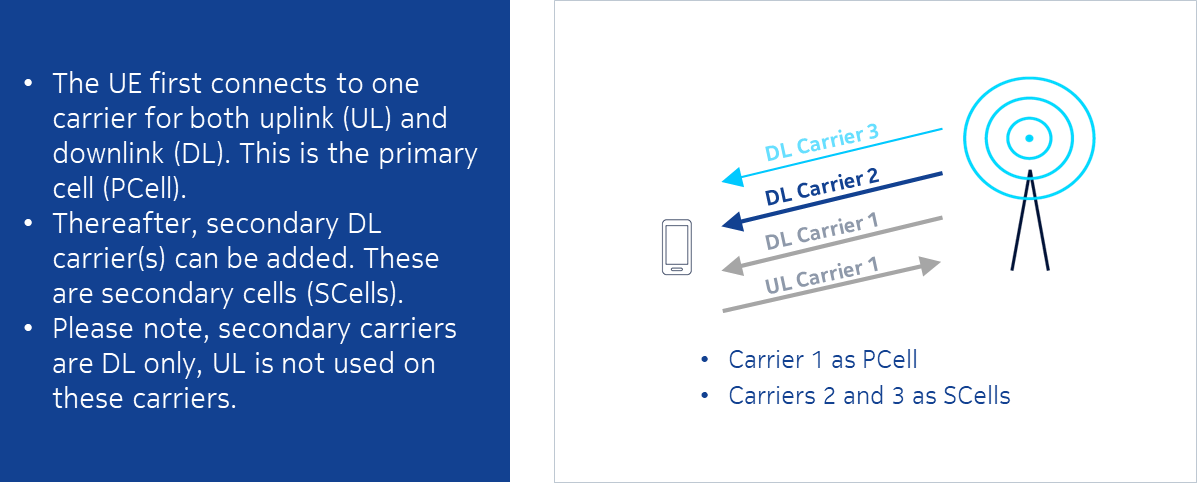
In 2023, BT Group and Nokia successfully demonstrated 4CC CA in 5G SA downlink with concurrent 2CC CA in 5G SA uplink. With today’s announcement, the companies reached the next milestone, achieving further performance uplift in connections from the device to the network by increasing throughput and capacity.
The tests were conducted in the field on live network spectrum at Adastral Park, BT Group’s headquarters for R&D, using Nokia’s 5G AirScale portfolio and a device powered by a Snapdragon® 5G Modem-RF system from Qualcomm Technologies. Downlink speeds of 1.85 Gbps were reached, using three FDD carriers NR2600 (30MHz), NR2100 (20MHz), NR1800 (20MHz) aggregated with two TDD carriers NR3600 (40+40MHz).
Greg McCall, Chief Networks Officer at BT Group, said: “This latest milestone achieved with Nokia and Qualcomm Technologies enhances 5G SA performance as we work towards the launch of our network, building further on the benefits of carrier aggregation in delivering greater throughput and speeds to customers. This is particularly important as more and more devices come to market with 5CC CA capabilities. We are focused on maximizing our spectrum assets to deliver the very best experience to our customers with that in mind.”
Mark Atkinson, SVP and Head of RAN at Nokia, said: “This successful trial with our long-standing partner, BT is another great example of Nokia’s clear leadership in 5G carrier aggregation technology. Multi-component carrier aggregation helps mobile operators to maximize their radio network assets and provide the highest 5G data rates at more locations to subscribers.”
Dino Flore, Vice President, Technology, Qualcomm Europe, Inc. said: “Qualcomm Technologies is committed to pushing the boundaries of 5G connectivity, and our Snapdragon 5G Modem-RF Systems are designed to unlock the full potential of 5G, delivering unparalleled speed, efficiency and capacity for networks and their users. We are proud to work with Nokia and BT Group to play a key role in bringing this enhanced 5G experience to European consumers.”
This follows on from previous carrier aggregation ‘firsts’ aimed at boosting 5G SA performance across both downlink and uplink, where demand for greater speeds is growing in importance for a number of both existing and emerging use-cases, including live-streaming and video calls.
Today’s achievement has been delivered with one eye on the future, too. The 5G SA handset ecosystem right now is relatively small, but we expect to see more and more devices come to market by the early part of next year which are capable of supporting this technology. So we’re laying down a marker to say that at EE, as the UK’s best and most reliable network1, we are building capabilities into our network to support both the devices of today and the future.
We want to ensure that we really deliver on the promise of 5G SA for our customers, and an ongoing focus on innovation and research will be key to achieving this. Whether that’s through carrier aggregation advancements like today’s, demonstrating network slicing capabilities for guaranteed quality of service, or exploring how we can support the emerging IoT ecosystem through the likes of 5G RedCap technology, we’ll continue to prioritize advancements in network quality to support the evolution of the 5G services ecosystem.
……………………………………………………………………………………………………………………………………………………………………………………………………………………………….
In January, T-Mobile conducted a six-component carrier (6CC) aggregation download using sub-6-GHz spectrum on its live 5G network saying it was the first time that’s ever been done. The test involved aggregating two channels of 2.5 GHz, two channels of PCS spectrum and two channels of AWS spectrum, according to T-Mobile US, which produced an “effective 245 MHz of aggregated 5G channels.”
T-Mo said that they were able to “achieve download speeds of 3.6 Gbps in sub-6 GHz spectrum. That’s fast enough to download a two-hour HD movie in less than 7 seconds!”
Resources and additional information:
Website: Nokia AirScale
Website: Nokia 5G RAN
Website: 5G Carrier Aggregation explained
Website: Multi-Gigabit 5G with Carrier Aggregation | Nokia
References:
https://newsroom.bt.com/delivering-seamless-standalone-in-the-busiest-locations/
T-Mobile US, Ericsson, and Qualcomm test 5G carrier aggregation with 6 component carriers
Finland’s Elisa, Ericsson and Qualcomm test uplink carrier aggregation on 5G SA network
Dish Wireless with Qualcomm Technologies and Samsung test simultaneous 5G 2x uplink and 4x downlink carrier aggregation
Ericsson and MediaTek set new 5G uplink speed record using Uplink Carrier Aggregation
https://www.nokia.com/about-us/newsroom/articles/5g-carrier-aggregation-explained/
GlobalData: MWC 2024 roundup + More balanced IT workforces
MWC 2024 Roundup:
Huawei, Qualcomm, and Ericsson, were singled out for praise, recognized for their groundbreaking work in advancing 5G technology. Their contributions were seen as pivotal in propelling the widespread adoption and ongoing development of 5G, setting new benchmarks for the future of tech innovation.
Huawei Technologies
Huawei took center stage at MWC 2024 with its pioneering 5.5G products, including the Telecom Foundation Model and the industry’s first 5.5G intelligent core network. Influencers applauded the innovative all-optical products like the OptiX OSN 9800 K36, OptiXaccess MA5800T, and iFTTR OptiXstar F50, highlighting Huawei’s foresight in enhancing network capabilities and digital transformation. The reception was largely positive, underscoring Huawei’s role in the next generation of connectivity.
Qualcomm
Qualcomm unveiled its latest Snapdragon processors, which powered the highly discussed OnePlus Watch 2, at MWC 2024. Influencers praised the new chipset for its efficiency and performance, emphasizing Qualcomm’s pivotal role in advancing the wearable tech space. The buzz reflects Qualcomm’s successful push towards more powerful and energy-efficient chip designs, which are set to redefine user experiences across devices.
Telefonaktiebolaget LM Ericsson
Ericsson showcased its commitment to advancing 5G infrastructure and network capabilities, earning positive reactions for its efforts to enhance global connectivity. Ericsson’s innovations in network evolution and digital transformation were recognized as key to the future of telecommunications, with influencers noting the company’s significant contributions to a more connected world.
……………………………………………………………………………………………………………………………
A More Balanced IT Workforce:
With a focus on creating more inclusive work environments, telecommunications firms are not only fostering a culture of acceptance but also reaping significant financial rewards in the process, says GlobalData, a leading data and analysis company.
Robert Pritchard, Principal Analyst, Enterprise Technology and Services at GlobalData: “With the tech sector being driven at high pace by change and innovation, recruiting teams that more closely resemble the world at large has become more of a priority amongst leading companies. It is telling that 60% of Fortune 500 companies were founded by immigrants.”
GlobalData analysis reveals that more balanced (by gender, race, and disability) workforces are emerging over time, often led by the C-Suite and the Board, but also in the wider employee base.
“With Indian-born CEOs at Google and Microsoft, ever more women CEOs across telecoms and tech companies, and a gay man in charge at Apple, the sector is again leading the way.
“DEI has largely moved from a tick-box exercise to a key strategic management consideration. The companies that are more advanced have been proven to be more successful, with their customers preferring brands and organizations that align with their values and identities.”
Studies by Boston Consulting Group and Harvard Business Review have found that companies with more diverse management teams have 19% higher revenues and 9 percentage points higher EBIT margin. In addition, in the battle for scarce talent in tech, DEI is seen as a key deciding factor for potential recruits – especially amongst Generation Z.
Pritchard concludes: “In terms of rebalancing the overall workforce, it is a long journey as most employees stay in post for over four years. Nevertheless, demonstration of a cultural shift and a more inclusive approach is vital. This can be helped in the short-term through training, mentoring, cross-team building, volunteering, and commitment to employee wellbeing. Success in DEI is reflected in commercial success in the long-run.”
Telstra achieves 340 Mbps uplink over 5G SA; Deploys dynamic network slicing from Ericsson
Australian telco Telstra announced this week that it has achieved a 5G uplink speed of 350 Mbps over 5G Standalone (SA) using sub-6 GHz frequencies in a live commercial network in partnership with Ericsson and Qualcomm. Telstra claims this as a new global record for 5G uplink speed, which is 100 times faster than the average 3G uplink speed.
Telstra’s new 5G SA uplink capability combines its mid-band spectrum holdings to create a 140MHz channel for sending data from the device to the network.
The tests were completed using a mobile test device powered by Qualcomm Technologies’ latest Snapdragon® 5G modem-RF System and an existing in-market NetGear Nighthawk M6 Pro Mobile Broadband device in the live commercial network on the Gold Coast.
The latest software from Ericsson brings together different combinations of frequency ranges and types to enable a single 5G uplink and downlink data channel.
By aggregating carrier bands, it considerably increases the uplink speeds, while the ability to use low band carriers in these combinations of frequencies delivers improved coverage and performance enhancements for the 5G SA Network.
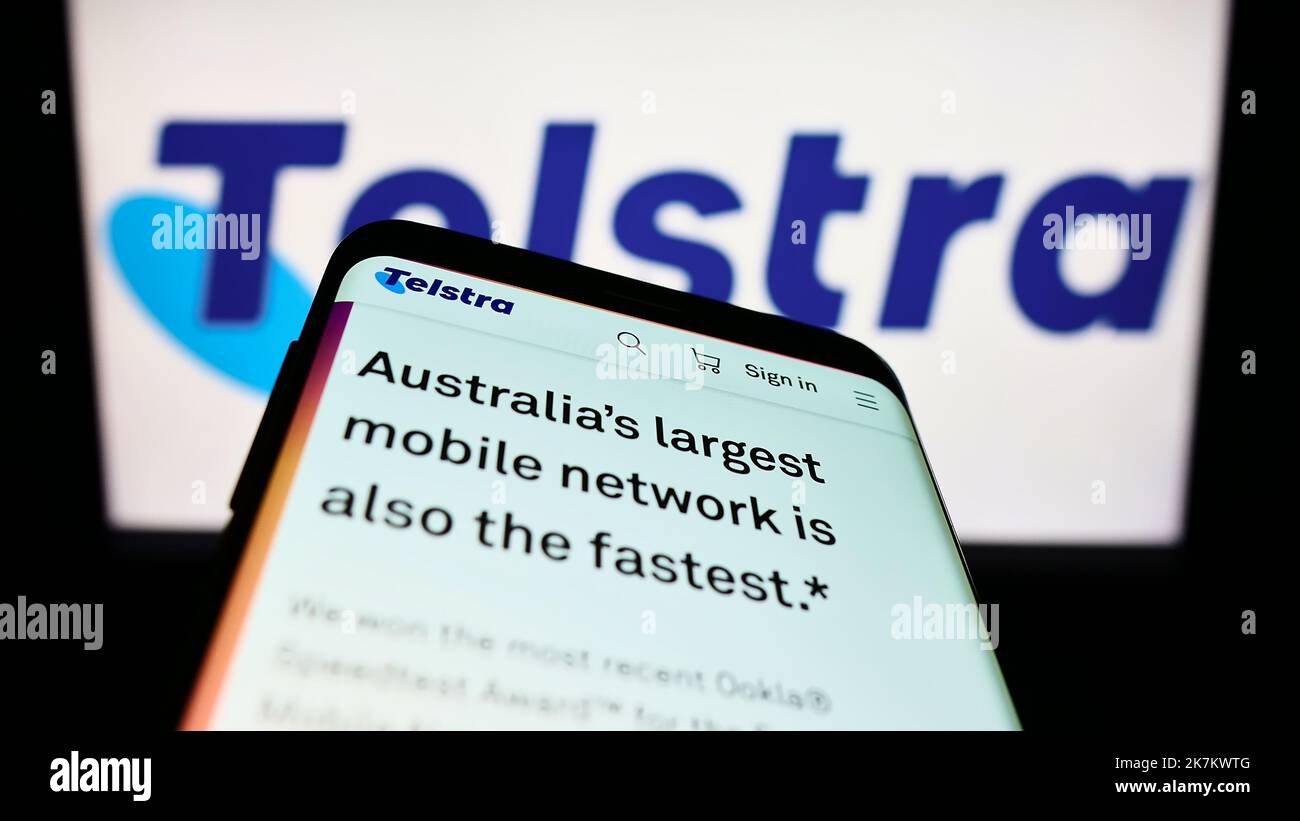
Mr Amirthalingam says: “The uplink and downlink 5G data channels work together to provide a seamless and almost symmetrical like 5G service, meeting the increasing demand for data-intensive applications such as augmented and virtual reality, or sharing photos and memorable movie moments with friends.
“The technology also includes advanced features in the base station that can prioritise different types of data and applications and can support future differentiated services, like network slicing.”
“On top of this, Telstra also has the option to use the n5 (850MHz) carrier that is currently serving its 3G Network. “
“Our latest 5G Standalone uplink speed achievement is 100 times faster than the typical 3G uplink speed, which is great news for customers. Enterprise Applications such as these are increasingly becoming more uplink heavy with things like such as high-definition video surveillance cameras and the faster speeds and coverage will all provide a much better experience.”
“The ability to use low band frequencies and repurpose our 3G low band 850 MHz frequency to deliver 5G SA coverage when the 3G network closes on 30 June 2024, has the benefit of providing improved depth of coverage and enhancing the 5G experience for customers.”
“It’s a further example of how we are leading the way in 5G innovation and investment, and how we are committed to delivering the best and most advanced network for Australia.”
To test and validate this capability, Telstra worked with long-term partners Ericsson, the global leader in 5G network equipment, and Qualcomm, one of the world’s leading wireless chipset companies.
Emilio Romeo, Head of Ericsson Australia and New Zealand, says: “Ericsson’s latest software features enables Telstra to capitalize the full spectrum portfolio for a wider coverage whilst providing far superior data rates. Customers will be empowered to explore new experiences offered with 5G Standalone such as differentiated services and a range of applications, which will in turn drive network monetization.”
Durga Malladi, Senior Vice President and General Manager, Technology Planning & Edge Solutions Qualcomm Technologies, Inc., says: This live test proves that uplink carrier aggregation on 5G Standalone network has the potential to significantly increase upload speeds and capacity, thus unlocking new experiences for consumers.”
This latest achievement takes Telstra’s World-First count to 53 since the launch of 3G. It is only through its collaboration efforts with industry and its strategic partners, like Ericsson and Qualcomm, that it can deliver the technology innovation and leadership that its customers can benefit from.
……………………………………………………………………………………………………………………
Telstra has also implemented Ericsson’s Dynamic Network Slicing software for automated network orchestration. This software gives the operator a fully automated and monetizable network slicing orchestration capability to sell slicing services to enterprise customers.
………………………………………………………………………………………………………………
References:
Telstra’s T25 to extend 5G coverage and offer enhanced customer experiences
Telstra wins most lots in Australia’s 5G mmWave auction
BT Group, Ericsson and Qualcomm demo network slicing on 5G SA core network in UK
Years after 5G network slicing was hyped to the sky (see References below dating from 2028), BT Group, Ericsson and Qualcomm Technologies, Inc. have successfully demonstrated end-to-end consumer and enterprise 5G differentiated connectivity enabled by 5G network slicing on Ericsson’s 5G Core and Radio Access Network technology in the UK with devices powered by the Snapdragon ® 8 Gen 2 for Galaxy Mobile Platform.
The trial, which took place at Adastral Park, BT Group’s home of research and innovation, established network slices for Gaming, Enterprise and Enhanced Mobile Broadband (eMBB), and showed how, by allocating a portion of the 5G SA network to provide dynamic partitions for specific use-cases, optimal performance can be maintained for bandwidth-heavy activities including mobile gaming and video conferencing even during peak times.
Mobile gaming is experiencing relentless growth, with traffic on EE’s network almost doubling since the beginning of 2023 to more than two petabytes of data every month. With consistent low-latency, jitter-free and immersive experiences increasingly essential to the gaming experience, network slicing is expected to be a key enabler of performance and growth in the 5G SA era.
Together, BT Group, Ericsson and Qualcomm Technologies demonstrated an optimal mobile cloud gaming experience on Nvidia’s GeForce Now, maintaining a throughput comfortably in excess of the recommended 25 Mbps at 1080p even when a background load was generated. The companies initiated a gaming session on Fortnite using the Samsung S23 Ultra device, equipped with the Snapdragon 8 Gen 2 for Galaxy Mobile Platform, and Ericsson implemented Network slicing along with the Ericsson RAN feature Radio Resource Partitioning on EE’s Network to achieve a smooth experience. The experience was simultaneously compared to a non-optimised eMBB RAN partition, which was congested by the background load, resulting in a less than optimal gaming experience.
The trial also validated the potential of network slicing for BT Group’s business customers. Using the enterprise and eMBB slices, configured via URSP rules which enables a device to connect to multiple network slices simultaneously depending on the application, it demonstrated consistent 4K video streaming and enterprise use-cases using the Samsung S23 Ultra device, powered by Snapdragon 8 Gen 2 for Galaxy. Enterprise communications platforms and video applications such as YouTube require a stable connection and low jitter to work well. The Ericsson 5G RAN Slicing feature, Radio Resource Partitioning, was enabled to ensure the enterprise traffic to achieve an optimal experience.
5G network slicing requires a 5G SA core network. It supports these diverse services and reassigns resources as needed from one virtual network slice to another, making the one-size-fits-all approach to service delivery obsolete.
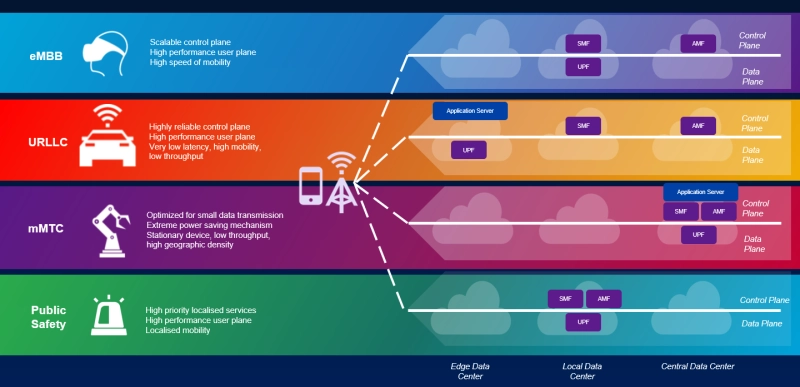
Image courtesy of Viavi
Greg McCall, Chief Networks Officer, BT Group, said: “Network slicing will enable us to deliver new and improved capabilities for customers in the 5G SA era. As we work diligently towards the launch of our own 5G SA network, today’s successful demonstration of how slicing enables us to differentiate Quality of Service to guarantee performance for different segments is a significant milestone, and illustrative of the new services that will be enabled by 5G SA.”
Enrico Salvatori, Senior Vice President and President, Qualcomm Europe/MEA of Qualcomm Europe, Inc., said: “We are proud to collaborate with BT Group and Ericsson on the network slicing trial, which used a device powered by the Snapdragon 8 Gen 2 for Galaxy mobile platform. Together, we showcased the enhanced performance and flexibility 5G Standalone capabilities, such as network slicing, will bring to consumers and enterprise experiences.”
Katherine Ainley, CEO, Ericsson UK & Ireland, said: “5G standalone and network slicing demonstrates that leading operators like EE will be able to offer customers tailored connectivity with different requirements on speed, latency and reliability for specific applications, such as video streaming and gaming. This ultimate next step in connectivity will enable new service offerings for consumers and businesses who require premium performance, while helping to drive future market growth and innovation for the UK in a wide range of new industries.”
References:
ABI Research: 5G Network Slicing Market Slows; T-Mobile says “it’s time to unleash Network Slicing”
Ericsson, Intel and Microsoft demo 5G network slicing on a Windows laptop in Sweden
Ericsson and Nokia demonstrate 5G Network Slicing on Google Pixel 6 Pro phones running Android 13 mobile OS
Samsung and KDDI complete SLA network slicing field trial on 5G SA network in Japan
Nokia and Safaricom complete Africa’s first Fixed Wireless Access (FWA) 5G network slicing trial
Is 5G network slicing dead before arrival? Replaced by private 5G?
5G Network Slicing Tutorial + Ericsson releases 5G RAN slicing software
Network Slicing and 5G: Why it’s important, ITU-T SG 13 work, related IEEE ComSoc paper abstracts/overviews
https://www.viavisolutions.com/en-us/5g-network-slicing
Finland’s Elisa, Ericsson and Qualcomm test uplink carrier aggregation on 5G SA network
With Ericsson and Qualcomm doing the “heavy lifting,” Finland network operator Elisa conducted a live test of uplink carrier aggregation (CA) on its commercial 5G standalone (SA) network. Elisa operates commercial 5G SA networks, starting with its home market of Finland and following it up last year by deploying it in Estonia.
The three partners achieved an upload speed of 230 Mbps in a live 5G network using Uplink Carrier Aggregation. For this test, a 25MHz 2.6 GHz FDD (frequency division duplex) band was combined with a 100MHz 3.5 GHz TDD (time division duplex) band running on a mobile test device powered by Snapdragon® X75 5G Modem-RF System.
Ericsson’s Uplink Carrier Aggregation software combines mid-band FDD and mid-band TDD within the frequency range 1 (FR1), boosting speeds to enable uplink-heavy applications such as live streaming, broadcasts, cloud gaming, extended reality, and video-based use cases.
Uplink-heavy consumer applications on the rise:
According to Ericsson’s most recent Mobility Report, uplink accounted for a modest 8% of total traffic on a sample of four mobile networks analyzed. The applications that generated the largest volume of uplink traffic were personal cloud storage services, followed by comms services and video.
While 8% doesn’t seem like much, Ericsson emphasised that uplink volume is highly context dependent. For instance, there is likely to be more of it at a live event, like a concert or a sporting event, where users enthusiastically film and then share as much action as possible.
A growing amount of data traffic generated today is in the uplink, highlighting the need for new network capabilities to boost uplink speed and capacity and deliver seamless 5G user experience. For instance, concertgoers are recording and streaming videos live on their social media accounts. With fast uplink speeds, they can share their most exciting moments in real-time with friends and family without worrying about lags, congestion, or poor network quality.
In addition to Elisa, Vodafone has also been testing out uplink CA recently, as have Dish, BT and Telefónica.
………………………………………………………………………………………………………………….
Quotes:
Mårten Lerner, Head of Product Area Networks, Ericsson, says: “This latest technology milestone with our partners Elisa and Qualcomm Technologies unlocks high upload speeds in commercial 5G Standalone networks. With this game-changing software capability, we are enabling unparalleled user experience for applications such as live streaming, video conferencing, augmented reality/virtual reality and cloud gaming.”
Sami Rajamäki, Vice President, Network Services, Elisa, says: “We continue as a pioneer of 5G in Finland and develop our network services with our customers’ future needs in mind. The use of augmented reality and development towards metaverse will increase the demand for fast uplink connections. Therefore the top speeds achieved together with Ericsson and Qualcomm are an important step in the development of 5G Standalone network.”
Dino Flore, Vice President, Technology at Qualcomm Europe, Inc. says: “The uplink speed achieved with Elisa and Ericsson is a testament to the breakthrough performance of the Snapdragon X75 5G Modem-RF System. We are excited to see the innovative use cases Elisa can unlock for customers with their 5G Standalone network.”
Ericsson has a robust portfolio of software features that provide a boost in the uplink, and the feature deployed in this demo with Elisa and Qualcomm – FR1 Uplink Carrier Aggregation – became commercially available in the fourth quarter of 2023.
Visit the Ericsson booth in Hall 2 at MWC 2024 in Barcelona to see how a superior uplink performance is being enabled for use cases such as live streaming.
References:
T-Mobile US, Ericsson, and Qualcomm test 5G carrier aggregation with 6 component carriers
Dish Wireless with Qualcomm Technologies and Samsung test simultaneous 5G 2x uplink and 4x downlink carrier aggregation
Ericsson and MediaTek set new 5G uplink speed record using Uplink Carrier Aggregation
BT tests 4CC Carrier Aggregation over a standalone 5G network using Nokia equipment



